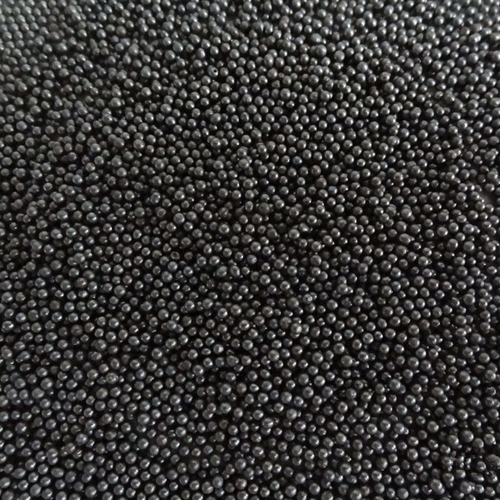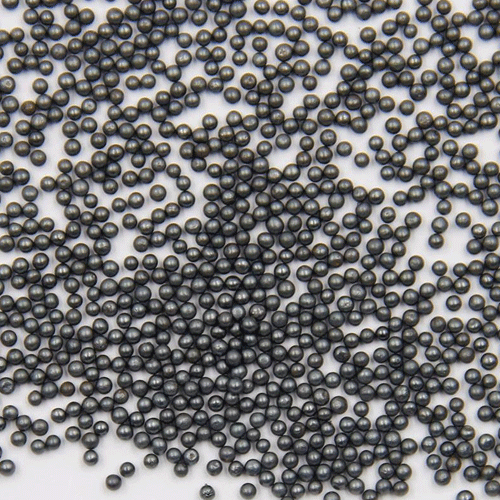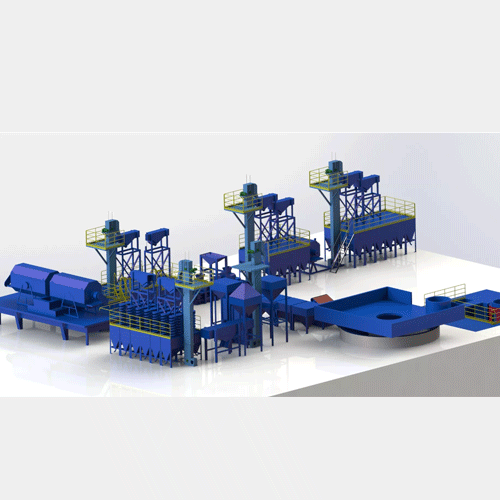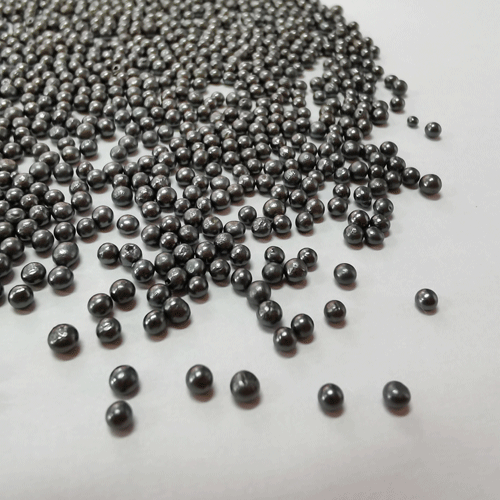Steel shot strengthening is a surface treatment method that enhances the surface hardness and wear resistance of the material by projecting steel shots on the surface of the material to generate compressive stress. This technology is widely used in industrial fields, such as manufacturing automotive parts, aerospace, and machine manufacturing. The success of this technology depends on three key steps: material selection, steel shot strengthening and heat treatment. In the following article, these three steps will be described in detail.
Step One: Material Selection
Material selection is the first step in steel shot strengthening and has a crucial impact on the quality and performance of the final product. Material selection must be based on required material properties and application environment. During the steel shot strengthening process, the materials used must have good toughness and hardness, and must be able to withstand the compressive stress generated by steel shot strengthening. Commonly used materials include mild steel, stainless steel, alloy steel and aluminum alloy. Choosing the right materials ensures the final product has the required performance and longevity.
Step Two: Steel Shot Strengthening
Steel shot strengthening is the process of spraying high-speed flying steel shot onto the surface of a material to create compressive stress. In the steel shot strengthening process, the steel shot must be of appropriate size, shape and hardness. The size and shape of the steel shot determine the size and distribution of the compressive stress it generates on the material surface. Generally speaking, the diameter of the steel shot should be 1-2 times smaller than the thickness of the material to ensure that the steel shot can fully cover the entire surface. In addition, the hardness of the steel shot is also very important. The higher the hardness of the steel shot, the greater the compressive stress generated.
Step Three: Heat Treatment
Heat treatment is the final step in steel shot strengthening, which helps stabilize and improve the surface properties of the material. During heat treatment, the material is heated to the appropriate temperature and then cooled to room temperature. This process removes the stress created by shot strengthening and increases the material's hardness and toughness. The heat treatment process and temperature must be determined according to the type of material and application environment. Generally, higher temperatures produce greater hardness but also reduce the toughness of the material. Therefore, the material's properties and application requirements must be fully understood and evaluated before heat treatment is performed.
There are many methods of heat treatment, including quenching, tempering, normalizing and annealing. Quenching involves heating a material to a high enough temperature and then cooling it rapidly to increase hardness. Tempering is to heat the material to a lower temperature and cool it slowly after quenching to increase the toughness of the material and reduce stress. Normalizing is to heat the material to the appropriate temperature, maintain it for a period of time, and then cool it slowly. Annealing is to heat the material to an appropriate temperature, maintain it at a constant temperature for a period of time, and then cool it slowly. Different heat treatment methods can change the microstructure and properties of materials to achieve different performance goals.
In short, steel shot strengthening is an important surface treatment technology that can greatly improve the hardness and wear resistance of the material surface. To achieve the best results, materials, steel shots and heat treatment methods must be carefully selected and each step appropriately optimized. High-quality and high-performance steel shot-strengthened products can only be obtained when each step is given adequate attention and processing.
 Features of Reaguan Steel Shots
Features of Reaguan Steel Shots
 Metal surface shot peening process
Metal surface shot peening process
 Grinding Applications in the Automotive Industry
Grinding Applications in the Automotive Industry
 Tips and features for using shot blasting machine steel shots
Tips and features for using shot blasting machine steel shots